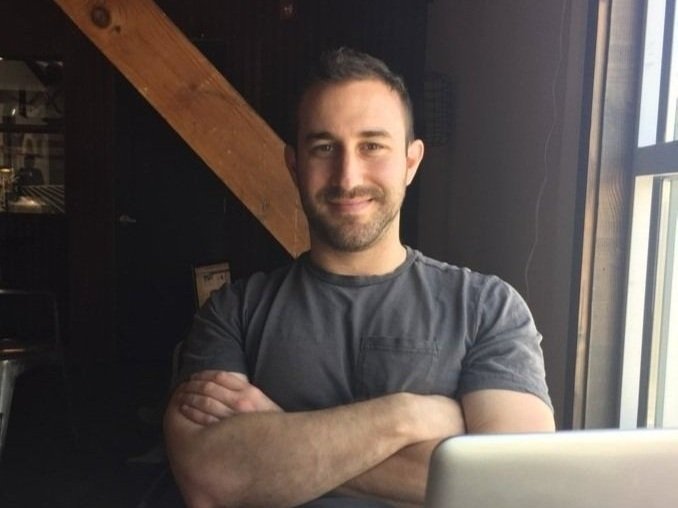How Airline Safety Videos Grab Attention and Create Brand Identity
If we were to put people in an empty room alone with nothing but an electrocuting cable as their only source of entertainment, chances are the majority of them would choose to shock themselves instead of doing nothing.
This is exactly what happened in a 2014 Harvard experiment. People go through great lengths to spare themselves of boredom. As the saying goes, an idle mind is the devil’s playground.
When something’s better than nothing (even when it’s painful), it's no surprise brands constantly come up with new ways to grab our attention. If you’ve flown anywhere in the past decade, then you’ve already witnessed the newest evolution in airline innovation: airline safety videos. What used to be a dull experience has become a way for airlines to creatively express their brand identity and create an entirely new source of revenue.
The story of airline safety videos is a strange cocktail of regulation, competition, and innovation. Underneath its layers of creativity and engagement, it teaches us a lesson in the psychology of attention. To understand these implications, and to get a glimpse into the future of airline safety videos, let’s look back into the past first.
Airline Safety Video in the 1980s: Loss Aversion and the Beginning of a Regulated Requirement
Aviation regulations didn’t explicitly state how airlines should deliver safety briefing, only that “the operator of an aircraft shall ensure all passengers are orally briefed before each take-off,” which gives them leeway for freedom of expression. The implementation of airline entertainment screens quickly became the best way to communicate safety messages.
Here was the golden opportunity to be unique, experiential, and memorable. But why the hesitation? Airlines played it safe because one wrong move could land them—no pun intended—on the brink of bankruptcy. A theory in behavioral economics, called loss aversion, explains this risk-averse behavior. We generally avoid losses rather than seek potential gains. In other words, losing hurts more than gaining feels good. So for over 30 years, there was no innovation. The content of safety videos remained unchanged until a risk-seeking individual took a chance that paid off. In 2007, everything changed.
Airline Safety Videos in the Late 2000s: The Birth of In-Flight Content Marketing
The genesis can be traced back to aviation entrepreneur Richard Branson. Branson saw the airline video as a way to hype Virgin's fun and rebellious brand identity. The result? The birth of the first creative airline video, which featured passengers in cartoons and demonstrated the plane's safety procedures in a funny and accurate way.
Soon after, the bigger and more conservative airlines took notice. After years of achieving lack-luster results, Delta Airlines found its secret formula for creating video content: through the use of existing user-generated content rather than original ones. Before long, all the big players were in on the fad. But like time, fads’ novelty effect is fleeting in nature.
This fleetingness brings us to our attention’s interesting relationship with fads: we’re just naturally drawn to them, but only for a certain period of time. Attention habituation happens when we experience this fleetingness. What’s new and flashy can soon become commonplace and predictable. And this is how it played out with safety videos.
Since Virgin Airlines had a first-mover advantage, cartoon-based airline videos only worked once, so it isn’t attention-grabbing or worthy of brand differentiation if re-used by others. This ultimately leads to a “novelty arms race” across airlines vying to differentiate, grab attention and go viral in the age of social media. It’s no wonder Korean Air generated over 14 million views on YouTube just 6 weeks later after featuring a chart-topping K-Pop band on the video. But it doesn’t stop here. One airline has already started the novelty arms race, taking one profitable step further.
Airline Safety Videos in 2020 and Beyond: Ad Space and Cross-Promotional Opportunity
The next evolution in airline videos has morphed into cross-promotional content. One of the first examples came from United Airlines when they rolled out Fly Like a Superhero; a Spider-Man themed airline video. United integrated its classic safety features into an entertaining, four-minute clip of Spiderman swinging and jumping his way to victory over a group of bad guys. Matt Adams, United’s magazine writer, said of the video, “since flying is one of the few superpowers Spider-Man doesn’t possess, we gave him a little help.”
It's almost hard to imagine cross-promotional partnerships didn't happen sooner since airline video grabs what marketers crave—our attention. As an airline, they have to brief us on safety procedures. As passengers, we have to watch it. What other ad platforms can we say that about? And most importantly, where does it go from here?
The Future of Airline Safety Videos: Digital Media and Personalized Marketing
The future is uncertain for consumers. If airline videos are effective ad platforms, what's to stop them from going down the same route as ad space in the digital world?
The more advertisers target ads, the better. It’s why Facebook ad space is so valuable—they can target us down to our personality types. Could this be the next logical evolution of the airline video? Would first-class passengers watch them with sneaky product placements by luxury brands, while economy passengers watch one featuring everyday brands? Without regulations, the opportunities seem endless. Since they know who's sitting where well ahead of time and travel miles are often linked to credit cards, they could create airline videos based on our personalities and consumer behavior (e.g. spending habits).
Airlines seem to be familiar with this kind of segmentation. For instance, if they already charge different prices for different customers at different times, then it's not a vast stretch to use the same approach for personalized airline videos. Once they have a platform to sell ad space on, airlines enter the business of collecting and analyzing our data to increase their profitability.
What’s even more interesting is trends in the airline business have a snowballing effect (as we've seen with airline safety videos). Fierce competition, high costs, and price-sensitive consumers mean companies just copy-paste strategies. Once it's established we respond to innovative changes positively, companies are quick to seize on the opportunity.
Before we get swept away, let’s consider the bright side. The production of branded airline videos is much more cost-intensive than creating online ads, limiting how many versions can be made. Consumers may also reject branded versions outright. After all, we already pay extra for luggage and (awful) airline meals, so it would be a ballsy move to force us to watch an ad shrouded in safety features.
In all things life; when there’s a will, there’s a way. As conscious consumers, we should keep in mind that where there’s attention, there’s always opportunity. Perhaps it’s time we embrace our idle minds?
Photo by Aaron Sebastian via UnSplash
About the author
Matt Johnson, PhD is a researcher, writer, and consumer neuroscientist focusing on the application of psychology to branding. He is the author of the best-selling consumer psychology book Blindsight, and Branding That Means Business (Economist Books, Fall 2022). Contact Matt for speaking engagements, opportunities to collaborate, or just to say hello
References for The Role of The Underdog in Brand Storytelling
"HP Feature Stories". www.hp.com. Retrieved 2018-04-13.
AZ Central: Dwayne Johnson talks past arrest and theft ring, Bang Showbiz
Branson, R. (1998). Losing my virginity: The autobiography. London: Virgin Pub.
Business Insider: 19 Silicon Valley landmarks you must visit on your next trip, Biz Carson
CNBC Make It: Jeff Bezos’ first desk at Amazon was a door with four-by-fours for legs—here’s why it still is today, Ali Montag
CNBC: Tesla passes General Motors to become the most valuable US automaker, Robert Ferris
CNN Money: Startup lies companies tell you, Neil de Mause
Entrepreneur: Amazon CTO: 'We Still Consider Ourselves a Startup', Nina Zipkin
Forbes: The Amazing Story Of The Making Of 'Rocky', Tom Ward
Forbes: What Are Some Mind Blowing Facts About Tesla Motors?, Quora
Inc: 6 $25 Billion Companies That Started in a Garage, Drew Hendricks
Indy100: 11 rags-to-riches underdog success stories, i100 Staff
Kao, D. T. (2015). Is Cinderella resurging? The impact of consumers' underdog disposition on brand preferences: Underdog brand biography and brand status as moderators. Journal of Consumer Behaviour, 14(5), 307-316.
Malone, Chris. The Human Brand: How We Relate to People, Products, and Companies (Kindle Locations 2468-2472). Wiley. Kindle Edition.
Snopes: Did a Struggling Sylvester Stallone Sell His Dog for $25?, Dan Evon
Paharia, N., Keinan, A., Avery, J., & Schor, J. B. (2011). The underdog effect: The marketing of disadvantage and determination through brand biography. Journal of Consumer Research, 37(5), 775-790.
Prestin, A. (2013). The pursuit of hopefulness: Operationalizing hope in entertainment media narratives. Media Psychology, 16(3), 318-346.
Today: J.K. Rowling's original 'Harry Potter' pitch was rejected 12 times — see it in new exhibit, Randee Dawn
Wealthy Gorilla: Dwayne Johnson Net Worth, Dan Western


